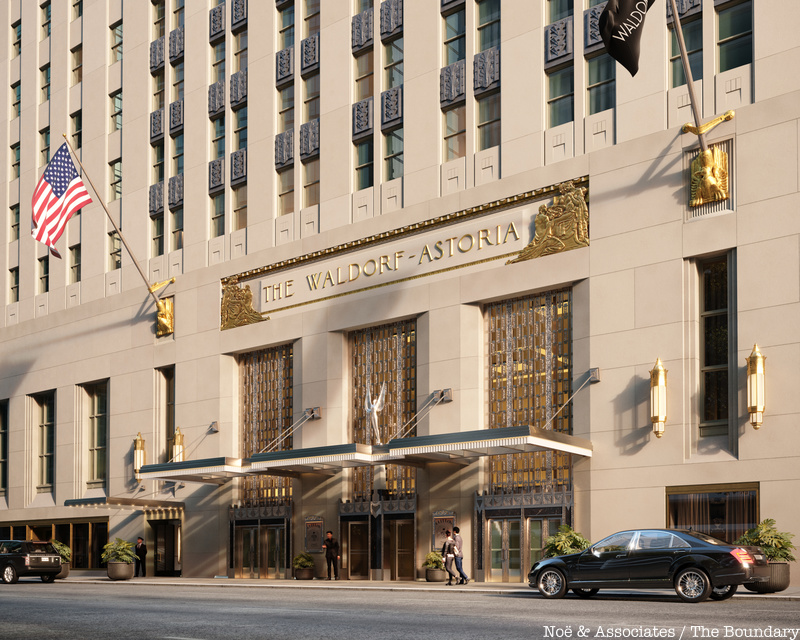
The famed Waldorf-Astoria Hotel has a quintessential New York City-origin story. It began as a family feud and rivalry between two very wealthy cousins who shared the last name Astor. William Waldorf Astor proceeded to irritate his cousin John Jacob Astor by building a 13-story hotel on the corner of Fifth Avenue and 33rd Street, on a residential block where John Jacob’s mother lived. Four years later, John Jacob, in turn, built a 17-story hotel just a few feet away–and the rest is history.
Today, the towers of the hotel have been converted into luxury residences, while the first eighteen floors, including iconic landmarked interior spaces, will operate as a hotel when renovations are complete. You can uncover more secrets of the Waldorf Astoria in our virtual talk with David Freeland, author of The American Hotel: The Waldorf Astoria and the Making of A Century, now in our Untapped New York Insider video archive.
1. Peacock Alley, a 300-ft Corridor Merged Two Hotels

In 1893, William Waldorf Astor hired renowned architect Henry Hardenbergh, who would later design The Dakota apartments, to build a 13-story grand hotel on the site of what was his family mansion. At the time, it was the largest and most luxurious hotel in the world, with 450 rooms. He then hired the talented George C. Boldt to act as General Manager. Mr. Boldt, with his reputation for the highest levels of service, quickly brought to the Waldorf Hotel a reputation as a premiere hotel–the first to offer private bathrooms, room service and electricity throughout. They were also the first to offer a kids menu.
Meanwhile, John Jacob Astor IV owned the other end of the block. Four years after the construction of the Waldorf, John Jacob built a 17-story hotel within feet of the Waldorf, using the same architect. His intention was to name it The Schermerhon after his mother. He approached George Boldt with the idea of managing his hotel, since George worked just feet away for his cousin. But George had a problem with the hotel name and said that he would only agree to manage it if it had a more appealing and less difficult name. John Jacob came back with the name “The Astor,” named after his family’s fur-trading company in Astoria, Oregon. In time–and having good business sense–it was decided that the hotels should be physically joined together by a long hallway. The combined hotels, opening in 1897, became the largest hotel in the world.
In order to join the two hotels, a 300-foot corridor was created with a restaurant on either end. It was named Peacock Alley since the fashionistas of the time–both men and women–enjoyed strutting their stuff up and down the alley as the public looked on. The creation of Peacock Alley joined the two hotels, and the name was changed to The Waldorf=Astoria, using not a dash but an equal sign in between.





